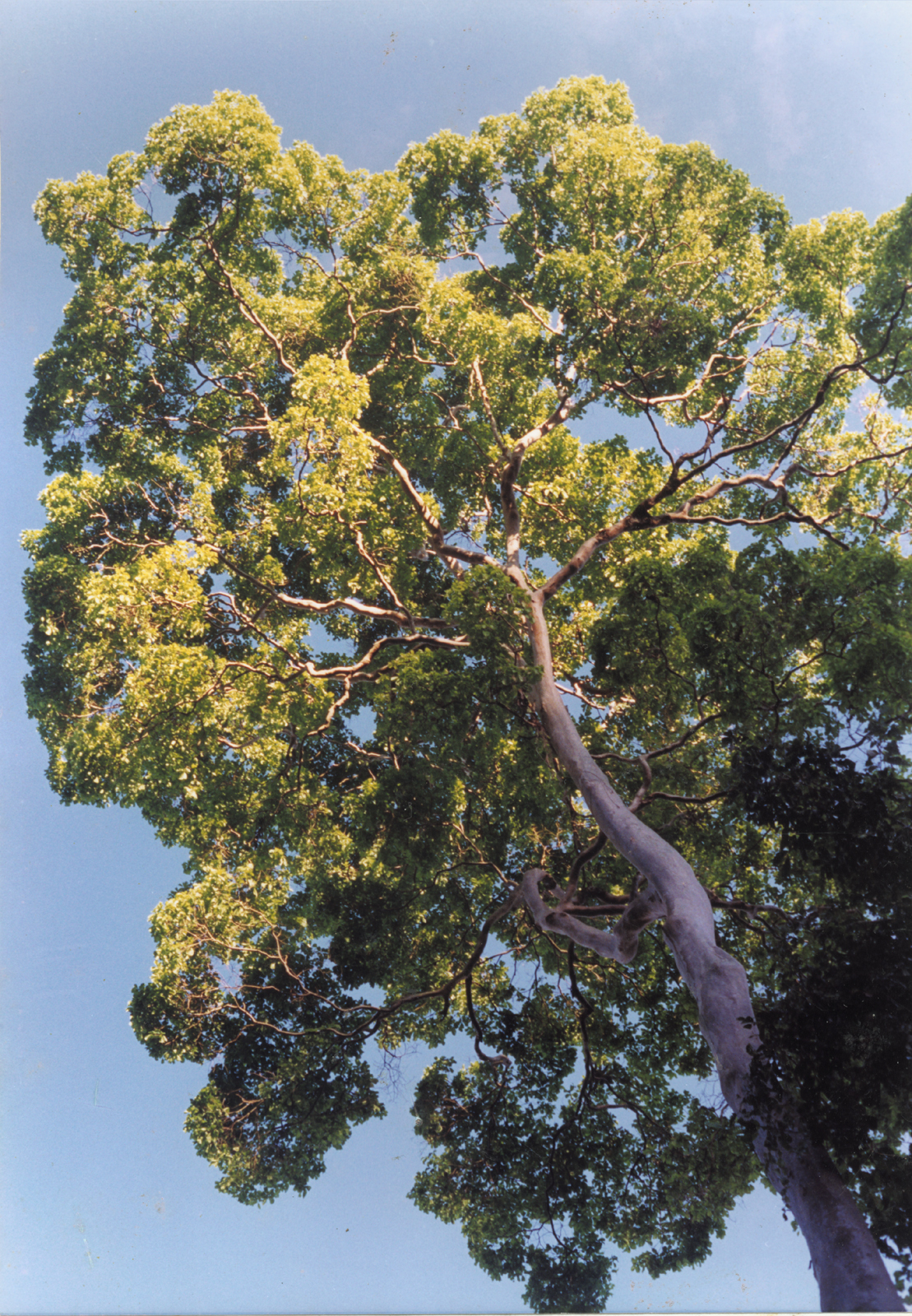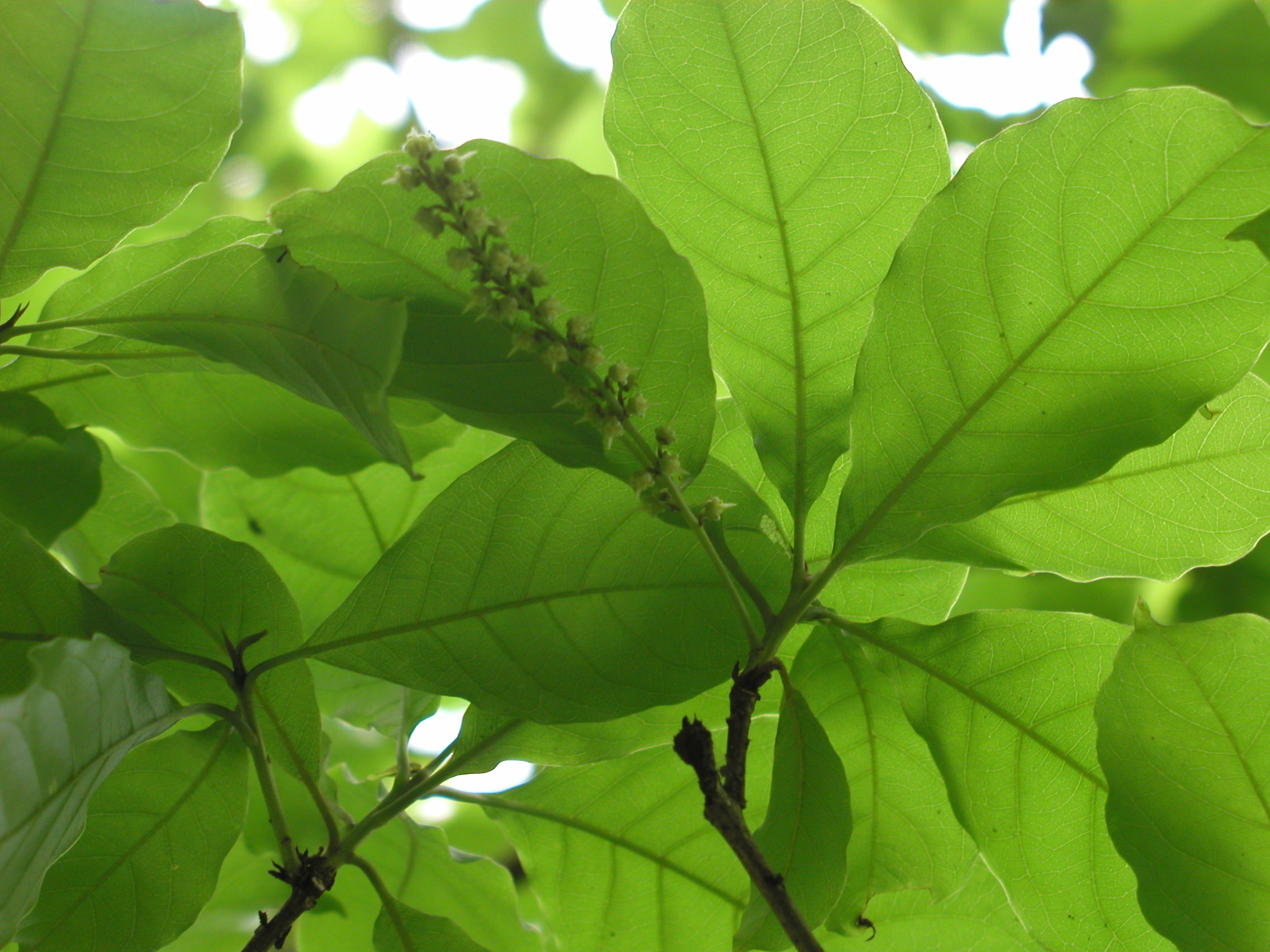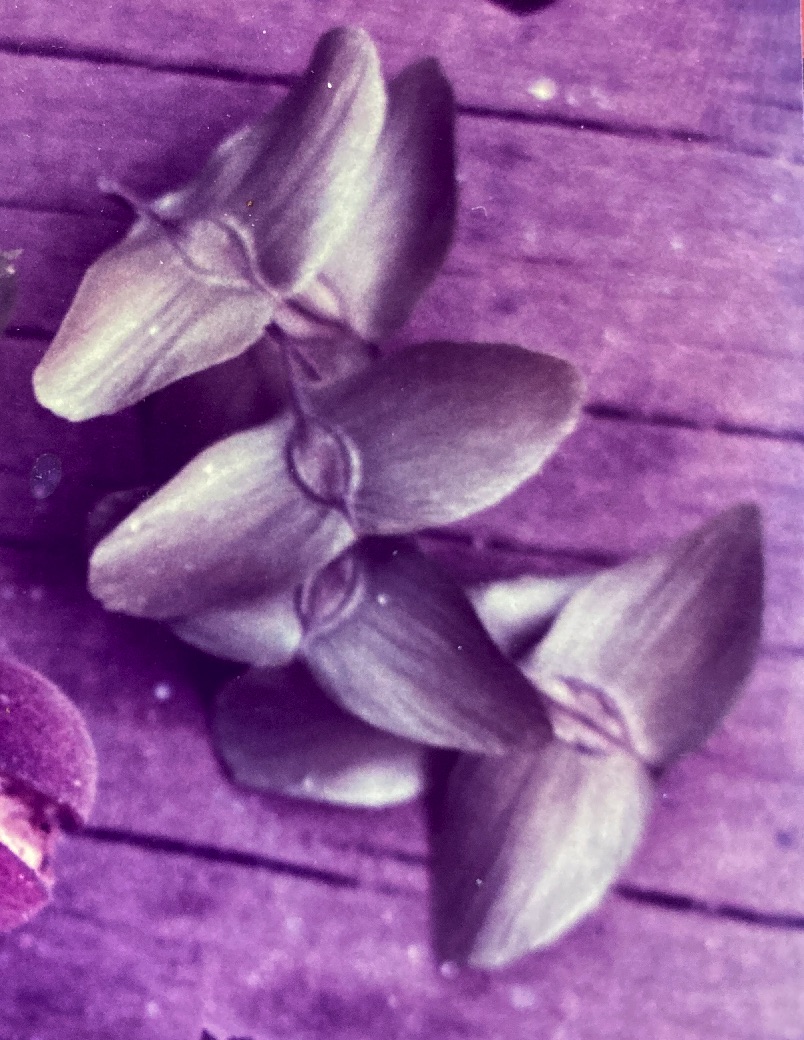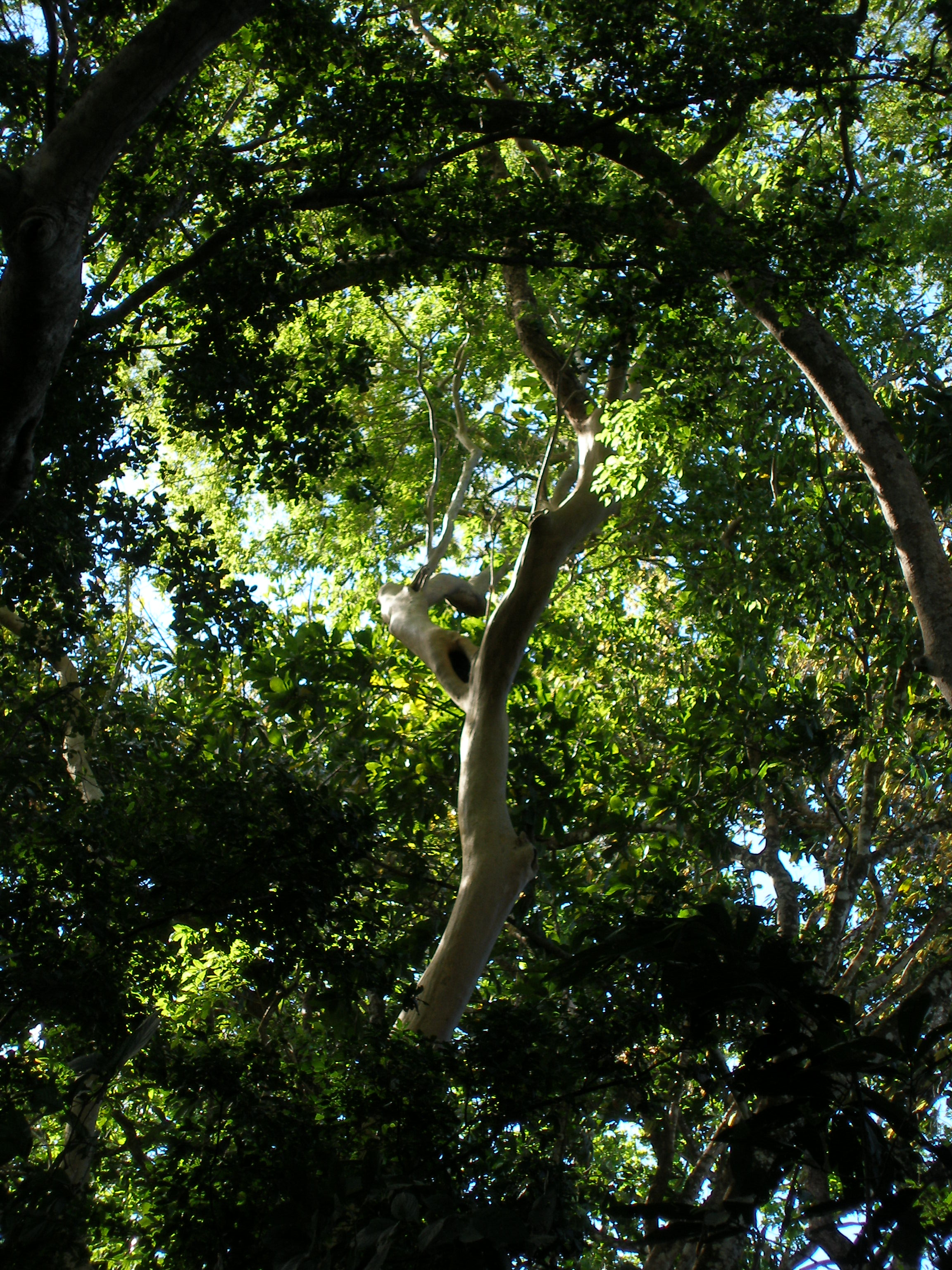Terminalia oblonga (R. & P.) Steud.
SURA
Occasional evergreen (or briefly deciduous) canopy tree (30-35m) preferring wet lowland or riparian habitats. Clad in extremely smooth, pale-orange or tan bark that often exfoliates in paper-thin sheets, Sura is a distinctive, easily recognizable species. Also a valuable timber tree, Sura is native to the low-lying regions flanking both the Caribbean and Pacific slopes of Costa Rica.
Description: Sura has a mostly straight trunk (80 cm or more) that has a mildly irregular cross-section. Though close to cylindrical, the bole is marked by lumps and shallow dents along its entire length. These irregularities are accentuated by the silky-smooth, thin bark that catches the eye with its unusual texture, sheen, and pale-orange color. Often Sura bark peals in randomly shaped but large, sheetlike sections. Large, thin, and planar buttress roots are always present, merging with the bole at a height of about one meter. Sura has many, upwardly angled branches that subdivide and spread into a thick but narrow, sometimes irregular crown.
Leaves (14 by 9 cm) are smooth, light green, simple and alternate: they are arranged in whorl-like clusters around the tips of the twigs. Each has an overall oblanceolate shape (wide and rounded distally, tapering proximally) with a short, poorly developed drip-tip. Foliage yellows and is shed annually, thought the timing of this event is variable between seasons and individuals. Nevertheless, most defoliation tends to occur in November with new leaves produced – after a brief (2 week) leafless period – in December. A second episode of crown renewal sometimes occurs in May.
Flowers are borne in axillary racemes that emerge just before the foliage. Each long and string-like raceme (15 cm) contains about 55 minute (3 mm in diameter) petalless, green flowers. The cup-shaped calyx is formed from five sepals and it supports 10 stamens and a small central pistil. Flower production is often quite prolific and the surrounding forest floor routinely becomes blanketed with fallen blossoms. Flowering, too, tends to be an erratically timed and unsynchronized event, but individual trees are fertile sometime between November and January. Most blossoms are observed in December.
Fruits begin to grow immediately and many aborted green samaras soon liter the ground underneath these trees. Fruits mature as double-winged, flat and papery brown samaras containing a single, elliptical seed in the center (3 cm by 1.5 cm). Harvests occur mainly in the months of March and April but ripe seeds may be seen as early as January. The seeds germinate with the onset of the rainy season in May and June.
Similar Species: For its unique and highly visible bark, the Sura tree is easy to identify. It can be confused with only one other Pacific coastal tree – Myrcianthes fragrans (Guayabón) – which also has smooth, orange, thinly pealing bark. However, this latter species has smaller (4 cm), rounded, oppositely arranged leaves – extending along the whole length of the twig – that readily distinguish it from Sura.
Natural History: Sura flowers are pollinated by insects and the winged seeds are transported short distances by the wind. The samaras mature during the end of the dry season to ensure they will be dry and light when carried away and so that they will not have long to wait before the first, wet season rains. Sura trees generate copious quantities of these seeds and it has been noted by the author and others (Hartshorn, 1983) that overall Sura seed viability is quite poor – few of them ever germinate.
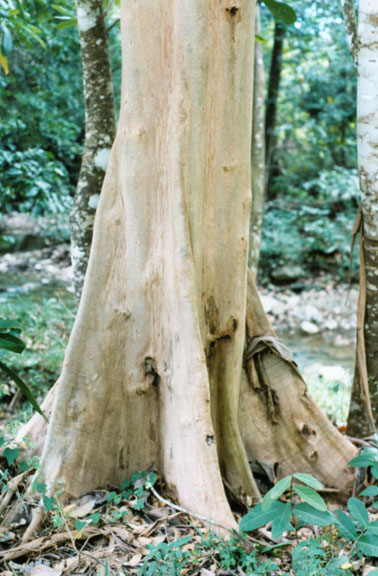
Uses: The wood of Sura is very heavy and coarsely grained. The yellow sapwood contrasts agreeably with the rich brown color of the heartwood. This valuable timber is used to mostly in floor and ceiling construction. In El Salvador and Quatemala, the tree is cultivated in coffee plantations for shade and, ultimately, timber (Hartshorn, 1983).
Distribution: Sura resides in poorly-drained valley soils and along streamsides. The tree is found in the lowland areas of both Costa Rican slopes. It ranges from Guatemala to Amazonia.
Photos: Tree Tree2 Trunk Trunk2 Leaf Leaf2 Flower Flower2 Flower3 Fruit

